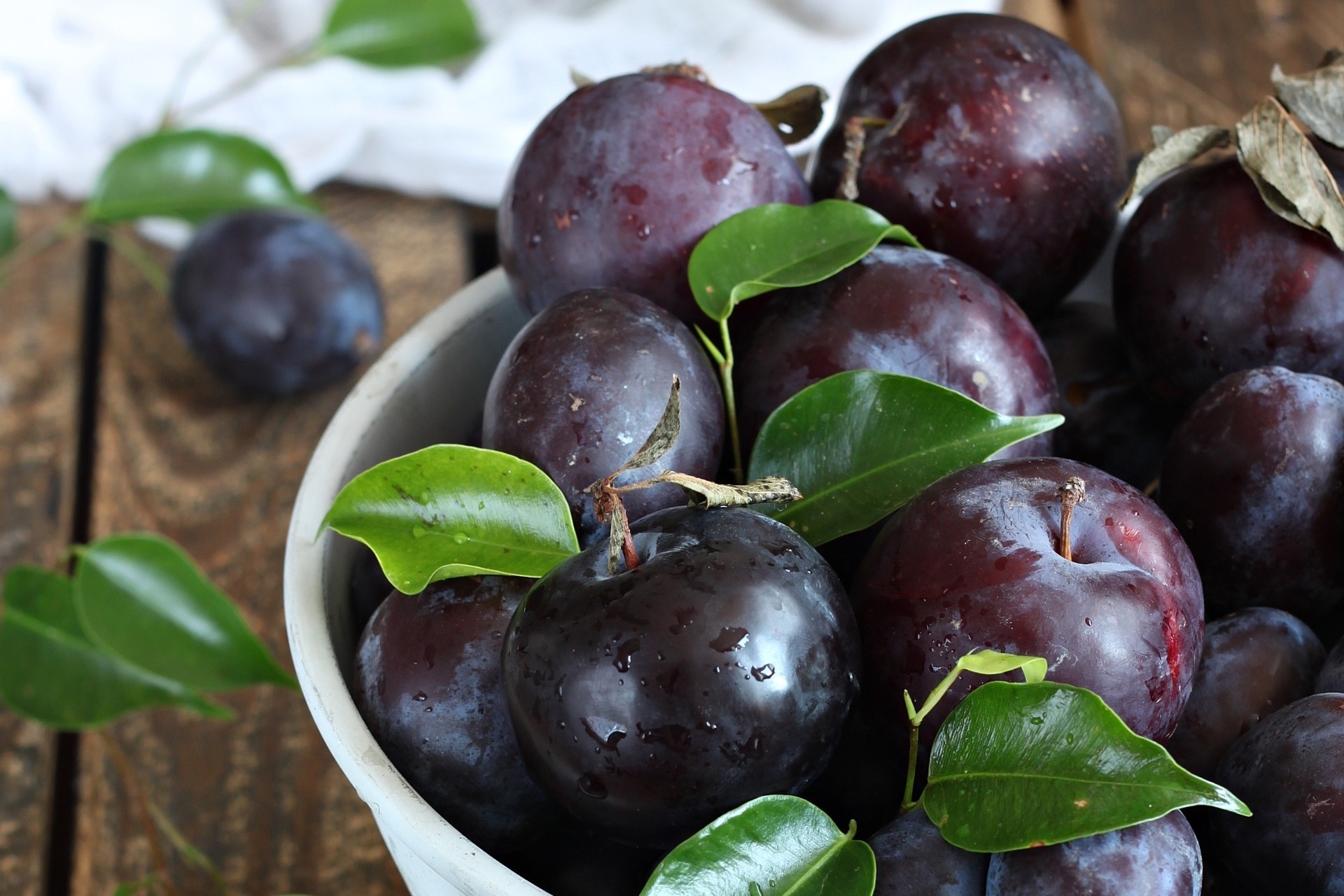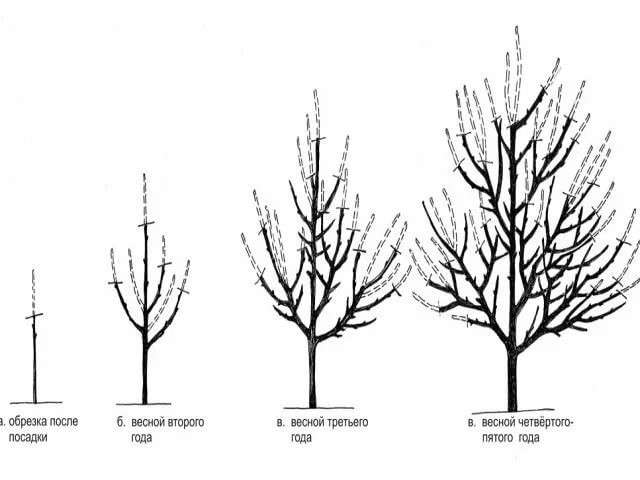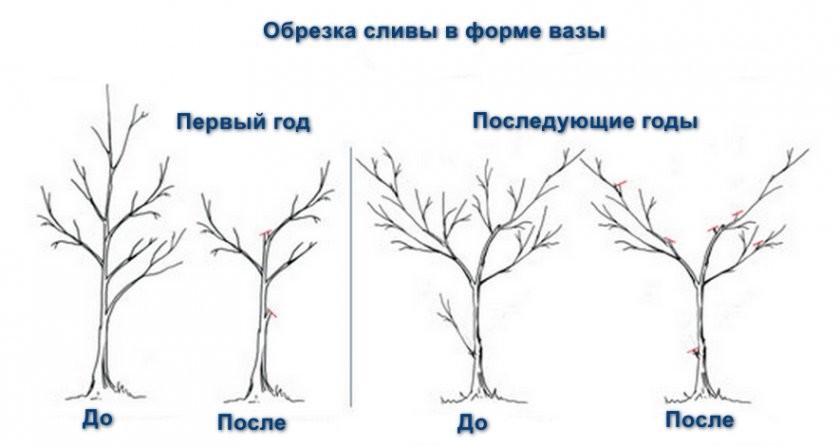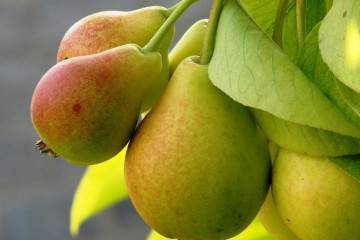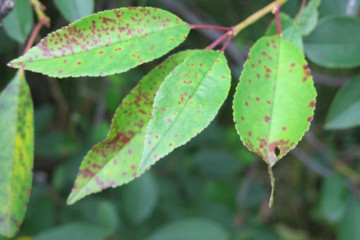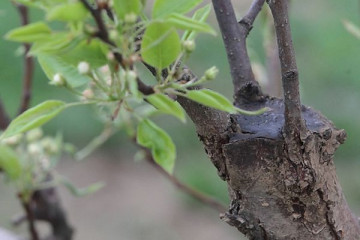Plum formation - beginner's schemes for pruning in the fall
Content:
- What pruning gives and why is it needed
- Types and techniques of pruning plums
- Seasonal sanitary pruning
- Scheme of rejuvenating pruning of old wood with height limitation
- Regulatory pruning of plums for fruiting
- Why you don't need to prune in the first year after planting
- Plum pruning scheme in spring
- Summer pruning plum
- Pruning plums in autumn
- Plum formation by age
- Common mistakes
The formation of the plum crown is started the next year after planting and is consistently carried out for four years. Subsequently, pruning is performed in order to loosen the branches and maintain a balance between growth and fruiting.
What pruning gives and why is it needed
The formation of the crown of the plum creates a powerful tree frame that can withstand the stress of the harvest. The main requirement of this stage is the selection of skeletal branches and ensuring the conditions for their development: sufficient lighting and a high level of mineral nutrition of the tree. It is impossible to rush to form branches of the following orders.
When the frame grows, cropping will stimulate the growth of fruit formations - fruits and bouquet branches. All varieties show good responsiveness to this agricultural practice.
Types and techniques of pruning plums
As the trees grow and develop, the following types of pruning are applied:
- formation - selection of branches of the first and second order;
- shortening - used for the central conductor and lateral branches in order to create a balance of growth force, is carried out obliquely over the kidney. A type of shortening is crown, it is used to give the tree a geometric shape and an aesthetic appearance;
- cutting "on the ring" - used for unnecessary thickening branches and vertically growing tops;
- methods of regulating pruning for fruiting - blinding, pinching (pinching) and kerbovka.
A sharpened pruner and a garden saw are required; an electric saw is suitable for crowning.
Seasonal sanitary pruning
A separate type of trimming is sanitary. It is performed on trees of any age every season and involves the removal of diseased, dead and broken branches. There are especially many of them on neglected, long-formed plants. They are put in order with such a trim.
Scheme of rejuvenating pruning of old wood with height limitation
Rejuvenation is carried out on trees over 15 years old. Start by limiting the height. At the same time, the central conductor is cut down to 2.0-2.5 m from the ground.
Extra shoots of the second order are completely removed. To stimulate the growth of fruit branches, 7-8 branches of the second order are enough. They are subordinate to each other in height and length.
Regulatory pruning of plums for fruiting
On plants over 5 years old, the buds give shoots that grow vertically, there are few fruits on them. A technique that inhibits vegetative growth is a kerbovka or an oval incision in the bark under the bud, from which it is supposed to form a fruiting shoot. The opposite situation, when there are a lot of dormant buds, will require kerbbing the branches above the bud.
The formation of a plum, its bole and too frequent arrangement of branches require blinding, manual removal of excess buds and green shoots of the current year. Reception of tweezers will be needed in the summer. It consists in pinching the tips of growing branches in order to improve the nutrition of the buds and plant flowers in them.
Why you don't need to prune in the first year after planting
When planting, the root system is docked. The tops of the branches should be cut with pruning shears by no more than 4-5 cm. The buds have a supply of nutrients for the growth of new roots. Until autumn, the young plant is not touched. Plum pruning is started next spring.
Plum pruning scheme in spring
In the southern regions, a leader and sparse-tiered formation is performed, in the north - a bowl.
Leadership formation
A step-by-step instruction on how to form a home plum tree looks like this:
- In the second year, you should choose a central shoot and three skeletal branches located at an angle of 120 degrees to each other. They need to be cut to the same height. The leader must be subordinated 20 cm above the skeletal branches. Remove the rest of the shoots completely.
- In the third year, the plum, which begins to bear fruit, is heavily overgrown with twigs. It is necessary to remove all that grow downward, inside the crown, intersect with each other.
- In the fourth year, the leader is transferred to a strong branch, the tops are removed at the sink, the remaining branches are shortened for subordination.
Vase or bush formation
When forming a plum with a wide bush, three skeletal branches are selected, the trunk above the upper branch is removed. In the future, they practice shortening the branches.
Sparse tiered formation
To understand how to form a sparse-tiered plum crown, one should know its differences from the leader. Up the stem, after 30-40 cm from the first tier, 2 branches should be left. They should be directed approximately centrally between the shoots of the lower tier. In the future, branches bearing fruit grow on them.
Summer pruning plum
In the summer, they perform the removal of tops, tweezers and, if necessary, a sanitary cut. If the branches bend under the weight of the crop, they can break off. To avoid this, equip the stands.
Pruning plums in autumn
Pruning plums in autumn is recommended in the southern regions, as the result of overwintering is not known in the north. To understand how much to prune plums in the fall, you need to evaluate the growth of the branches. Shortens that are too long are stronger than weak ones.
Plum formation by age
How and when to form a plum correctly depends on the age and strength of growth:
- Mowing an annual tree. It is carried out in the summer in the form of tweezers with enhanced growth of shoots. Not recommended in northern regions.
- Pruning a biennial tree. Performed in the spring, aimed at the formation of branches of the second tier and order. Shortening is applied.
- Pruning old plums. Performed in the spring and autumn in the form of sanitary and anti-aging pruning. The center leader is cut to lower the height of the tree.
- Cutting a neglected plum. Performed at any time of the year. It consists in sanitary, anti-aging and shortening pruning.
- Pruning a columnar plum. It consists in removing branches that create competition for the central shoot. Lateral branches are annually shortened by 1/3 of the length.
Common mistakes
You can't delay deadlines or skip pruning in any year. When cutting, do not leave hemp and do not make deep cuts inside the trunk.
Plum trees can be shaped with a center leader, tiers, or bowl. Correct pruning guarantees the durability of the tree and its high productivity.
